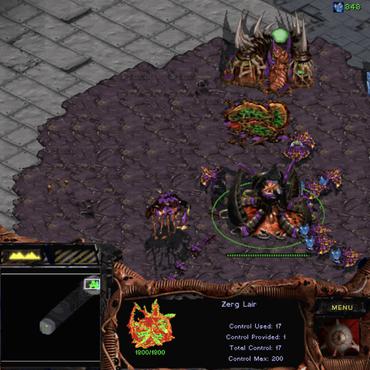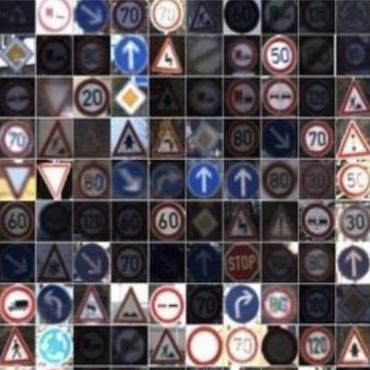Search Results for author: Thomas Unterthiner
Found 24 papers, 18 papers with code
Rectified Factor Networks
no code implementations • NeurIPS 2015 • Djork-Arné Clevert, Andreas Mayr, Thomas Unterthiner, Sepp Hochreiter
We proof convergence and correctness of the RFN learning algorithm.
Toxicity Prediction using Deep Learning
1 code implementation • 4 Mar 2015 • Thomas Unterthiner, Andreas Mayr, Günter Klambauer, Sepp Hochreiter
The goal of this challenge was to assess the performance of computational methods in predicting the toxicity of chemical compounds.
Fast and Accurate Deep Network Learning by Exponential Linear Units (ELUs)
16 code implementations • 23 Nov 2015 • Djork-Arné Clevert, Thomas Unterthiner, Sepp Hochreiter
In contrast to ReLUs, ELUs have negative values which allows them to push mean unit activations closer to zero like batch normalization but with lower computational complexity.
 Ranked #144 on
Image Classification
on CIFAR-100
(using extra training data)
Ranked #144 on
Image Classification
on CIFAR-100
(using extra training data)
Speeding up Semantic Segmentation for Autonomous Driving
2 code implementations • 1 Jun 2016 • Michael Treml, Jose A. Arjona-Medina, Thomas Unterthiner, Rupesh Durgesh, Felix Friedmann, Peter Schuberth, Andreas Mayr, Martin Heusel, Markus Hofmarcher, Michael Widrich, Bernhard Nessler, Sepp Hochreiter
We propose a novel deep network architecture for image segmentation that keeps the high accuracy while being efficient enough for embedded devices.
Self-Normalizing Neural Networks
13 code implementations • NeurIPS 2017 • Günter Klambauer, Thomas Unterthiner, Andreas Mayr, Sepp Hochreiter
We introduce self-normalizing neural networks (SNNs) to enable high-level abstract representations.
 Ranked #8 on
Drug Discovery
on Tox21
Ranked #8 on
Drug Discovery
on Tox21
GANs Trained by a Two Time-Scale Update Rule Converge to a Local Nash Equilibrium
66 code implementations • NeurIPS 2017 • Martin Heusel, Hubert Ramsauer, Thomas Unterthiner, Bernhard Nessler, Sepp Hochreiter
Generative Adversarial Networks (GANs) excel at creating realistic images with complex models for which maximum likelihood is infeasible.
 Ranked #1 on
Image Generation
on LSUN Bedroom 64 x 64
Ranked #1 on
Image Generation
on LSUN Bedroom 64 x 64
Coulomb GANs: Provably Optimal Nash Equilibria via Potential Fields
1 code implementation • ICLR 2018 • Thomas Unterthiner, Bernhard Nessler, Calvin Seward, Günter Klambauer, Martin Heusel, Hubert Ramsauer, Sepp Hochreiter
We prove that Coulomb GANs possess only one Nash equilibrium which is optimal in the sense that the model distribution equals the target distribution.
First Order Generative Adversarial Networks
1 code implementation • ICML 2018 • Calvin Seward, Thomas Unterthiner, Urs Bergmann, Nikolay Jetchev, Sepp Hochreiter
To formally describe an optimal update direction, we introduce a theoretical framework which allows the derivation of requirements on both the divergence and corresponding method for determining an update direction, with these requirements guaranteeing unbiased mini-batch updates in the direction of steepest descent.
 Ranked #2 on
Image Generation
on LSUN Bedroom 64 x 64
Ranked #2 on
Image Generation
on LSUN Bedroom 64 x 64
Fréchet ChemNet Distance: A metric for generative models for molecules in drug discovery
2 code implementations • 26 Mar 2018 • Kristina Preuer, Philipp Renz, Thomas Unterthiner, Sepp Hochreiter, Günter Klambauer
We propose a novel distance measure between two sets of molecules, called Fr\'echet ChemNet distance (FCD), that can be used as an evaluation metric for generative models.
RUDDER: Return Decomposition for Delayed Rewards
2 code implementations • NeurIPS 2019 • Jose A. Arjona-Medina, Michael Gillhofer, Michael Widrich, Thomas Unterthiner, Johannes Brandstetter, Sepp Hochreiter
In MDPs the Q-values are equal to the expected immediate reward plus the expected future rewards.
 Ranked #9 on
Atari Games
on Atari 2600 Bowling
Ranked #9 on
Atari Games
on Atari 2600 Bowling
Towards Accurate Generative Models of Video: A New Metric & Challenges
3 code implementations • 3 Dec 2018 • Thomas Unterthiner, Sjoerd van Steenkiste, Karol Kurach, Raphael Marinier, Marcin Michalski, Sylvain Gelly
To this extent we propose Fr\'{e}chet Video Distance (FVD), a new metric for generative models of video, and StarCraft 2 Videos (SCV), a benchmark of game play from custom starcraft 2 scenarios that challenge the current capabilities of generative models of video.
Interpretable Deep Learning in Drug Discovery
1 code implementation • 7 Mar 2019 • Kristina Preuer, Günter Klambauer, Friedrich Rippmann, Sepp Hochreiter, Thomas Unterthiner
Without any means of interpretation, neural networks that predict molecular properties and bioactivities are merely black boxes.
FVD: A new Metric for Video Generation
no code implementations • ICLR Workshop DeepGenStruct 2019 • Thomas Unterthiner, Sjoerd van Steenkiste, Karol Kurach, Raphaël Marinier, Marcin Michalski, Sylvain Gelly
While recent generative models of video have had some success, current progress is hampered by the lack of qualitative metrics that consider visual quality, temporal coherence, and diversity of samples.
Predicting Neural Network Accuracy from Weights
1 code implementation • 26 Feb 2020 • Thomas Unterthiner, Daniel Keysers, Sylvain Gelly, Olivier Bousquet, Ilya Tolstikhin
Furthermore, the predictors are able to rank networks trained on different, unobserved datasets and with different architectures.
Object-Centric Learning with Slot Attention
8 code implementations • NeurIPS 2020 • Francesco Locatello, Dirk Weissenborn, Thomas Unterthiner, Aravindh Mahendran, Georg Heigold, Jakob Uszkoreit, Alexey Dosovitskiy, Thomas Kipf
Learning object-centric representations of complex scenes is a promising step towards enabling efficient abstract reasoning from low-level perceptual features.
An Image is Worth 16x16 Words: Transformers for Image Recognition at Scale
143 code implementations • ICLR 2021 • Alexey Dosovitskiy, Lucas Beyer, Alexander Kolesnikov, Dirk Weissenborn, Xiaohua Zhai, Thomas Unterthiner, Mostafa Dehghani, Matthias Minderer, Georg Heigold, Sylvain Gelly, Jakob Uszkoreit, Neil Houlsby
While the Transformer architecture has become the de-facto standard for natural language processing tasks, its applications to computer vision remain limited.
 Ranked #1 on
Image Classification
on CIFAR-10
Ranked #1 on
Image Classification
on CIFAR-10
Understanding Robustness of Transformers for Image Classification
no code implementations • ICCV 2021 • Srinadh Bhojanapalli, Ayan Chakrabarti, Daniel Glasner, Daliang Li, Thomas Unterthiner, Andreas Veit
We find that when pre-trained with a sufficient amount of data, ViT models are at least as robust as the ResNet counterparts on a broad range of perturbations.
Differentiable Patch Selection for Image Recognition
no code implementations • CVPR 2021 • Jean-Baptiste Cordonnier, Aravindh Mahendran, Alexey Dosovitskiy, Dirk Weissenborn, Jakob Uszkoreit, Thomas Unterthiner
Neural Networks require large amounts of memory and compute to process high resolution images, even when only a small part of the image is actually informative for the task at hand.
MLP-Mixer: An all-MLP Architecture for Vision
46 code implementations • NeurIPS 2021 • Ilya Tolstikhin, Neil Houlsby, Alexander Kolesnikov, Lucas Beyer, Xiaohua Zhai, Thomas Unterthiner, Jessica Yung, Andreas Steiner, Daniel Keysers, Jakob Uszkoreit, Mario Lucic, Alexey Dosovitskiy
Convolutional Neural Networks (CNNs) are the go-to model for computer vision.
 Ranked #17 on
Image Classification
on OmniBenchmark
Ranked #17 on
Image Classification
on OmniBenchmark
Do Vision Transformers See Like Convolutional Neural Networks?
4 code implementations • NeurIPS 2021 • Maithra Raghu, Thomas Unterthiner, Simon Kornblith, Chiyuan Zhang, Alexey Dosovitskiy
Finally, we study the effect of (pretraining) dataset scale on intermediate features and transfer learning, and conclude with a discussion on connections to new architectures such as the MLP-Mixer.
GradMax: Growing Neural Networks using Gradient Information
1 code implementation • ICLR 2022 • Utku Evci, Bart van Merriënboer, Thomas Unterthiner, Max Vladymyrov, Fabian Pedregosa
The architecture and the parameters of neural networks are often optimized independently, which requires costly retraining of the parameters whenever the architecture is modified.
Accurate Machine Learned Quantum-Mechanical Force Fields for Biomolecular Simulations
no code implementations • 17 May 2022 • Oliver T. Unke, Martin Stöhr, Stefan Ganscha, Thomas Unterthiner, Hartmut Maennel, Sergii Kashubin, Daniel Ahlin, Michael Gastegger, Leonardo Medrano Sandonas, Alexandre Tkatchenko, Klaus-Robert Müller
Molecular dynamics (MD) simulations allow atomistic insights into chemical and biological processes.
Set Learning for Accurate and Calibrated Models
1 code implementation • 5 Jul 2023 • Lukas Muttenthaler, Robert A. Vandermeulen, Qiuyi Zhang, Thomas Unterthiner, Klaus-Robert Müller
Model overconfidence and poor calibration are common in machine learning and difficult to account for when applying standard empirical risk minimization.
Getting aligned on representational alignment
no code implementations • 18 Oct 2023 • Ilia Sucholutsky, Lukas Muttenthaler, Adrian Weller, Andi Peng, Andreea Bobu, Been Kim, Bradley C. Love, Erin Grant, Iris Groen, Jascha Achterberg, Joshua B. Tenenbaum, Katherine M. Collins, Katherine L. Hermann, Kerem Oktar, Klaus Greff, Martin N. Hebart, Nori Jacoby, Qiuyi Zhang, Raja Marjieh, Robert Geirhos, Sherol Chen, Simon Kornblith, Sunayana Rane, Talia Konkle, Thomas P. O'Connell, Thomas Unterthiner, Andrew K. Lampinen, Klaus-Robert Müller, Mariya Toneva, Thomas L. Griffiths
Finally, we lay out open problems in representational alignment where progress can benefit all three of these fields.















